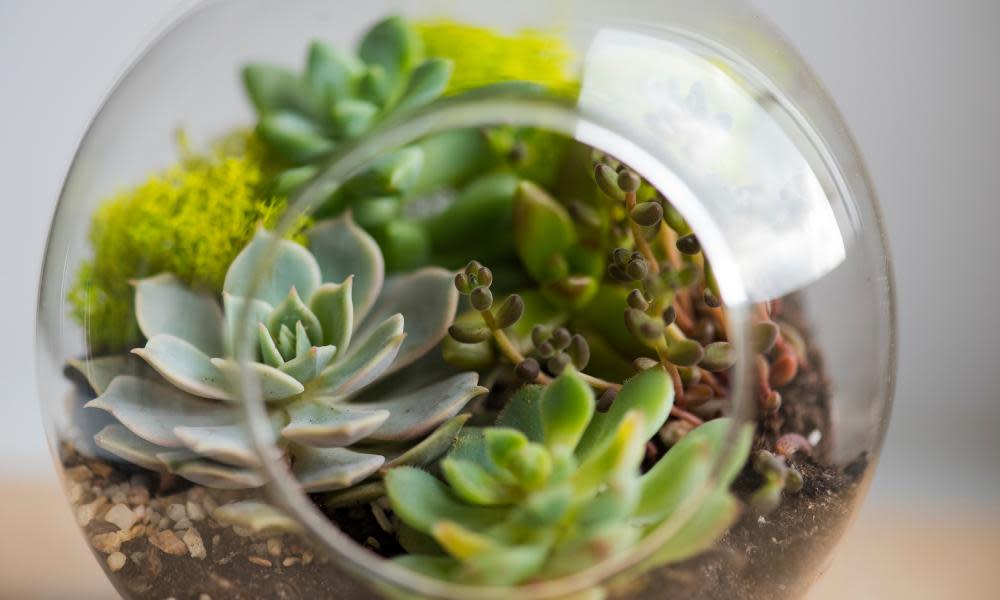Why terrarium plants like a nice cup of tea

It’s one of the most frequent gardening questions I’m asked: “How do you tackle mould growth in terrariums?” On Instagram I have been asked at least half a dozen times today – and it’s only lunchtime. I guess that’s what happens when you share your tiny flat with 30 or so tanks and terrariums, in all shapes and sizes. So, as you asked, here are my tips for keeping your ecosystem under glass healthy and mould free.
Terrariums are an ingenious piece of technology first invented in the 19th century by amateur naturalist Nathaniel Bagshaw Ward. He discovered that delicate, moisture-loving plants, like ferns and mosses, that were next to impossible to grow in the dry, drafty air of Victorian parlours suddenly thrived when the humidity and warmth were sealed around them in closed glass cases. Unfortunately, the same sky-high humidity levels that keep these plants alive can also be perfect for the growth of mould, which can strike without warning and soon overtake a terrarium. However, there are three simple steps you can take to keep the balance in check.
The best thing you can do to stop the spread of an infection is to spot it early. Inspect your terrarium once a week for any signs of fuzzy, white filaments creeping over the soil surface. I dampen the patch to prevent the airborne spores from spreading and wipe the moistened mould away with a soft paintbrush. You can use plain tap water to do this, but there is one thing that’s even better: cold chamomile tea. Chamomile plants contain a range of natural antifungal agents to fight off infections, and made into tea these compounds are extracted into an easily administered solution.
In fact, I water all my terrariums once a week by spraying them sparingly with a cold chamomile tea poured into an atomiser. This neatly brings us on to the main cause of mould growth: overwatering. Given their lack of drainage holes and sealed tops, closed terrariums need very little extra watering, and certainly never use a watering can. Doing this can cause root rot, which not only kills plants but creates the perfect environment for fungal infection (both of which are related).
As a general guide, a light misting with a fine spray just to moisten the leaves, only when condensation on the glass completely disappears (which for me is about once a week or every 10 days) is a good guide.
Finally, let’s talk aeration. Yes, good ventilation will prevent mould growth. But it will also reduce the humidity many plant species require to be healthy, which is the whole point of a terrarium.
So it’s a trade off. If you are growing relatively resilient ferns and moth orchids, leaving the lid off the terrarium one day a week would be beneficial. But if you have delicate, branching moss species or filmy ferns, it can mean the kiss of death.
The good news is that if you aren’t overwatering in the first place, are applying chamomile tea and removing any tiny mould patches as they appear, you probably won’t need to do anything else.
Email James at james.wong@observer.co.uk or follow him on Twitter @Botanygeek


